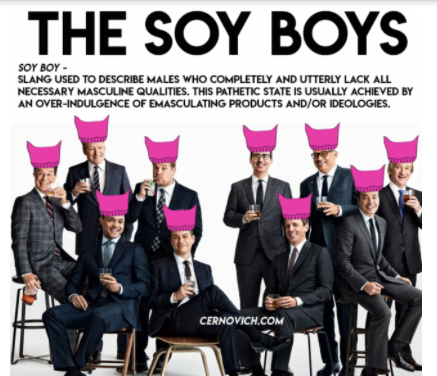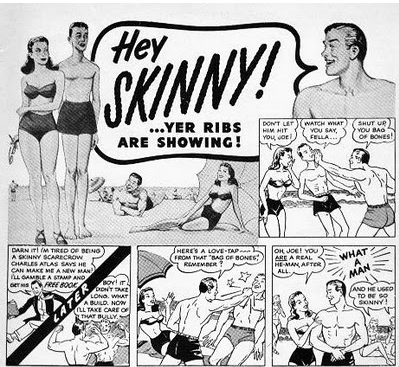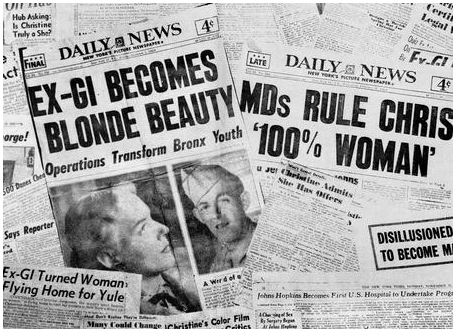New Developments in the Abuse and Expression of Effeminacy in Anonymous Online Spaces
A Tale of Two Image Boards
On the anonymous reaches of the internet, rapid developments articulate both coveted ideals, and stigmatised conditions, in strange new ways. This piece will examine two of the more recent figures cast up by this furtive, faceless churn of cultural reproduction: the Soy Boy, and his lesser known cousin, the Femboy.
Each of these two figures (one a term of abuse, one an ideal sought by young trans people) arises from different boards on 4chan: /Pol/ and /lgbt/. How 4chan, and websites like it, have become such a wellspring for contemporary cultural production requires a brief examination.
Online Identification, and the Rise of the Chans
In the mid-2000s, western internet culture came to be dominated by a new form of website imported from Japan. By this point Japanese Chan sites had already proven wildly successful, with 2Channel (launched in 1999, rebranded as 5chan last year) becoming so widely used as to rival conventional media forms such as television. 2Channel drew an annual revenue of ¥100million by the late 2000s. While Anglophone chans have never achieved this scale of popularity in any one nation, they have proven a lasting cultural feature on a more trans-national level. English-language Chans are used across Europe, and the Americas. This has had a transformative impact on the role identification played in internet use.
The internet has always had equivalents to addresses and phone numbers: emails and ICQ work along these lines, as do personal messenger clients. Beyond this direct means of communication, internet communities had previously often been centred around ‘forums’: focused around shared topics of interest where each user would create an account to post (usually with an associated avatar, and easily searchable posting history). More ephemeral chatrooms, and clients such as IRC and Javachat, would also connect users to a registered username.
By contrast, Chan sites were immediately usable by anyone who had an image to upload.
While the ascendancy of the Chans occurred at around the same time as the rise of social networking (first MySpace, then Facebook, Tumblr and Twitter, then later Instagram and Snapchat), they should not be collapsed with social media. In fact, they were a development heading in an opposing direction. While social media made an effort to reconnect the user to their mundanely, bureaucratically delimited self, Chan culture was rather more continuous with the earlier form of internet anonymity and pseudonymity (the same as before, simply accelerated, and further anonymised). Social media was a shift away from the ‘old school internet’: oriented toward the crafting of an identifiable persona, in most instances attached to one’s IRL self (affirmed by Facebook’s policing of real name use, and the much coveted Twitter blue tick). By contrast, Chan culture was defined primarily by its stripping away of the usual reference points of identities (names, avatars, etc.)
On the Chans, identity was instead a matter of community ethos: the anonymous format ensured that those posting were rather casting their contributions before a set of viewers and respondents who could be known only by their responses. One consequence was particular Chans or boards becoming associated with a particular ethos, and repertoire of local in-jokes.
In many cases the local character of a given Chan was carefully cultivated by the moderators or power users of these groups (who would usually have known each other personally, using backchannels such as IRC, and much more recently Discord). Those in the know would become aware that much of the apparently spontaneous amusement provided by memes was in fact the work of repetition and ‘forcing’ by admins. To the surface user however, these websites presented themselves as a faceless crowd, amusing itself in often inscrutable ways..
As well as performative displays of political extremity, the format also promoted more candid confessions, both of otherwise esoteric political views and personal secrets, with implications we will return to.
The Birth of the Soy Boy
<script async src="https://platform.twitter.com/widgets.js" charset="utf-8"></script>She should really shave.#SoyBoy#CuckFace#NationalismNow@wcsoto @Gavin_McInnes @mattjcoley
— SkädiBäby (@SkadiBaby) November 8, 2016
‘Soy Boy’ can only be understood as a term of abuse, one of several to become commonplace since /Pol/ (‘Politically Incorrect’) became 4chan’s most popular board, and a key recruitment ground for the collection of white-supremacist and fascist groups calling themselves the Alt-Right.
Associating their political opponents with unmanliness has been a continual concern of the Alt-Right. Referring to political enemies as ‘Soy Boys’ is simply the latest variation on /Pol/’s longstanding approach of calling their foes’ manhood into question.
I’ve written previously on the role played by ‘cuck’ in the Alt-Right’s imaginary, and the term deserves a brief further examination here, as the ‘Soy Boy’s’ direct antecedent.
‘Cuck’ was at its most precise and scathing when directed toward the more moderate wing of the American right, the so-called ‘Cuckservatives’. This term was used heavily throughout the 2016 ascendancy of Trump, a development which occurred outside the typical channels of the Republican Party’s institutional machinery. A ‘Cuckservative’ was a member of the Republican Party establishment who was insufficiently opposed to migration, and as such (by the twisted logic of internet white nationalism) stood accused of being unwilling to protect their wives from seduction by People of Colour.
So while ‘cuck’ sought to reanimate racial animus and anti-semitism at once, through defining those using it as willing to confront the racial order of the US from an unambiguously ‘pro-white’ stance.
With the moderate faction of the American right thoroughly routed (at least for the time being), the Alt-Right’s attention has turned more fully toward the US left. For these purposes, “cuck” has less direct applicability: to be a cuckold one presumably must first have a wife. Whereas one might expect this of a Republican politician or orbiting pundit, it’s less certain in the case of an Antifa member. For a time, the movement took to referring to their opponents as ‘Low T’, and Soy Boy can be seen as an extension of this appeal to amateur endocrinology. The term ‘nu-male’ has also been derisively used by Alt-Right memers to refer to liberal men, to the same effect.
In this context, the term ‘Soy Boy’ seeks to attach both the marginalisation of explicitly ethno-nationalist politics, and the ferocity with which the left opposes them, with a condition of gender degeneration in broader society. Non-comforting males are thus depicted as a consequence of biochemical damage pervading western genestock. The term ‘soy boy’ is one comedic means of expressing a core theme of the Alt-Right worldview: the degeneracy of the contemporary era, and its erosion of gender norms. Targeting anti-fascists, the ‘Soy Boy’ proved widely popular among the internet-based right wing, expressing the intense contempt that the Alt-Right has always expressed toward organised left-wing anti-fascist efforts (and toward left-wing men more generally).
Having already become a commonplace on the /Pol/, and, to a lesser extent, the Chans as a whole, the term followed the usual trajectory of online percolation (beyond the Chans, the term also saw heavy use on Twitter, subreddit /r/TheDonald, and key Alt-Right blogs The Right Stuff and Daily Stormer). Inevitably, the Soy Boy surfaced in a Knowyourmeme article, picked up on by online culture outlets Medium, the Daily Dot, and Mic, before finally appearing in British press (the Metro and Independent).
Despite having now been well publicised, the meme shows little sign of abating: the most recent video by prominent GamerGate vlogger Sargon of Akkad (usually classed as part of the so-called Alt-Light, currently subscribed to by over 755,000 on YouTube) features an amalgamation of memetic slurs associating enjoying ‘cuckholding’ with low testosterone levels.
The Pseudo-Science of Soyphobia

Such as it is, the Alt-Right’s scientific basis for the ‘Soy Boy’ is the belief that soy products (such as tofu or synthetic meat) are rich in ‘xeno-oestrogens’. Concerns around the oestrogenic effects of soy products are best described as based on a factoid: i.e. they are not entirely without empirical basis, while, at the same time, divorced from the relevant context required for actual insight into the topic at hand.
We should be careful not to dismiss as preposterous all concerns raised by ‘alternative’ sources, or lazily relying on the term ‘conspiracy theory’ as a means of dismissing all research breakthroughs from fringe sources. ‘Conspiracism’ (a term coined by Chip Berlet) does define the thinking of the Alt-Right, defining their writings and attracting followers with the promise of revealed truths usually concealed by the mainstream. Although often distorted, some kernel of truth can often be found in the claims of these circles. For instance, while Alex Jones was crudely misstating his case when he claimed that Big Pharma were ‘turning frogs gay’, we now know both that there was evidence one of America’s most heavily used pesticides was causing sex changes in frogs, and that the company responsible worked purposefully to suppress and personally discredit the key researcher demonstrating this.
The case against soy consumption, by contrast, has much shakier underpinnings: as with other protein rich plants, soy is indeed relatively high in phyto-oestrogens. However, concerns around the high oestrogen content of tofu are equivalent to the wildly overstated claims around the high protein and iron content of spinach: the levels found within the foodstuff aren’t as relevant as how much the human digestive tract can draw from it. Even where phyto-oestrogens have been found to have a discernible impact on human health, these have shown how limited the scope for blaming everyday consumption of soy products for ‘estrogenisation’ must be. One study found a single man developing gynaecomastia through consuming several gallons of soy milk a day.
There has been no empirical evidence suggesting a more balanced diet featuring soy reduces testosterone levels, or spikes estradiol.
Indeed, medical transitions of transgender women demonstrate exactly the feeble impact of the phyto-oestrogens found in plants: endocrinologists will advise their patients to end use of herbal means before starting treatment. Herbal remedies for aiding gender transitions are normally densely packed with phyto-oestrogens, which, in the event of attempting a conventional medical transition, will risk ‘clogging’ the oestrogen receptors. Up to a thousand times weaker, phyto-oestrogens will in fact risk disrupting a genuine feminisation process.
A great irony of soyphobia originating on the Alt-Right is that one of their other obsessions, milk, has been conclusively shown to be rich in (cow) oestrogen. Again, how much escapes the large intestine to the bloodstream is unclear. But it’s worth noting how inconvenient this fact is given the Alt-Right’s pronounced (and bizarre) love of lactose-rich dairy. Despite lactose tolerance being widespread throughout certain regions of Africa, the Alt-Right has attempted to make milk consumption a humorous centre of insurgent white identity with two key figures of the Alt-Right proper, Richard Spencer and Mike Enoch both using the glass of milk emoji in their Twitter handles.
There’s a rich irony that displays of racist bravado such as the one below were all the while exposing themselves to a good deal more oestrogen than those relying on soy.
Much like the ‘Jewish Question’ conspiracy of the west’s ruling institutions being dominated by a Protocols of the Elders of Zion-style conspiracy, the Soy Boy meme is rarely investigated in any detail, this critical analysis will be unlikely to discourage any white nationalists from using it. (This relatively underdeveloped aspect is in contrast to the ‘Race Realist’ view of black intellects as genetically inferior, which several prominent Alt-Right figures have devoted their online careers to attempting to vindicate). The purpose of this slur is rather a simple and suggestive declaration of opposition to ‘gender-related ‘degeneracy’.
21st Century Physiognomy

For the Alt-Right, the Soy Boy is at once an indication of the West’s decline, and an explanation for the political expression of opposition to their agenda.
Notions of national decline have long been key to reactionary thought, and it is in accepting a shared explanation of this (and how it might be resisted) that right wing movements define themselves. Through grasping the offensives they stage against the left, we can come to appreciate the modes of manhood the Alt-Right seeks to cultivate for itself.
Let us take as an example a contribution from one commenter on notorious Subreddit /r/The_Donald:
i see “men” like this everywhere, and its [sic] fucking pathetic. when [sic] life was a lot harder for people, like 100 years ago, you would not survive if you were a soyboy. these useless “males” take everything for granted so fucking much and suck the tit of society so often that they literally embody their laziest, pussiest form of being imaginable. when Michelangelo made the David he was not picturing a pajama wearing cuck 😡😠
On display here are the key features of this meme: the Soy Boy is a creature presented as novel, indicative of cultural decline, effeteness and deviation from the earlier glory of Western culture (although whether Michelangelo was indeed an exclusive admirer of ‘real men’ is surely an open question.)
Gender theorist Raewyn Connell’s 1995 book Masculinities argues convincingly that masculine ideals exist in plural forms, in any society. She distinguishes between ‘hegemonic’ and ‘insurgent’ masculinities: those which are relatively well established in the existing gender order, as opposed to those which are attempting actively to assert themselves. Connell frames masculinity as defined not only against femininity, but effeminacy (unmanliness). The standards of these ideals are never predetermined, but set through conflict and claims to power. Connell’s view allows for a flexible approach to manhood and its deployment of masculinities as they appear. It is attentive to the variety of standards which men encounter, from context to context. For instance: long hair is usually taken as a marker of femininity in the western world, yet few would speak of the regular patrons of a metal bar in those terms.
The Alt-Right has exerted considerable energy into advancing itself through developing a bestiary, and various veins of ironical humour prone to wrongfooting outsiders (and, crucially, giving cover for the hardline political position most involved are quite earnestly committed to). This has required establishing a set of norms that might seem inscrutable to outsiders, but provide a foundation for policing membership to the loose circles and rigid dogma which make up the movement’s core. The Alt-Right has based itself around an ‘insurgent masculinity’ in this sense, although in certain spaces (often referred to by frightened journalists as ‘the dark side of the internet’), it has already achieved hegemony.
The ‘insurgent masculinity’ the Alt-Right has cultivated is one defined by those it holds in contempt. But it’s also one which is flexible in a way demanded by the contemporary economic environment: while typically intolerant of non-white men, polyamorists, those in sexual minorities, and the visibly disabled, the Alt-Right has proven class indeterminate in its membership (if consistently elitist in its aspirations). Many members are long term employed and frank about their social isolation, while those marching at Charlottesville seemed visually indistinguishable from the preppy Young Republicans who’ve always replenished movement conservatism’s ranks across generations.
Ideals of robust manliness bridge these otherwise disparate connections: a key calling card of the Alt-Right are marble busts of Classical Antiquity, displaying gymnasium-honed physiques of ruling class Greeks and Romans. This pristine white marble is taken as exemplary of Europe’s lost glory. (In reality, Greek statues depicted a range of bodies, including some of the earliest depictions of hermaphrodites, and sweepingly simplified conceptions such as ‘whiteness’ would have had no meaning to the complex and variegated ethnicities which formed and dissolved across pre-modernity.)

[caption]‘Hypocrites!’, Austrian Identitarians scale Vienna’s neo-classical Burgtheatre in 2016, as part of an anti-migrant action.[/caption]
A coalition of this kind being fabricated is of the utmost importance for contemporary white nationalism: the demarcation of experiences between those men living as upper tier professionals (or as rentiers), and the millions left without steady employment, has grown starker since the global economic crash of 2008. Through its definition against effeminacy, Alt-Right can make use of disgruntled NEETs as easily as it can embittered business owners.
The class composition of the Alt-Right ranges from ‘Millennial Woes’ (a YouTuber revealed last January to be Colin Robinson, an unemployed 30something living with his father, who now makes his whole living through his homemade online race hate), to groups such as the Traditionalist Worker’s Party (which aims to organised the fabled ‘US white working class’ into street militias), to the stylised, archaic ruling class pretensions of The Right Stuff blog. What draws this mixed social array of white men together is the shared animosity towards those blamed for the chaos of 21st capitalist living: Jewish thinkers (‘Cultural Marxists’), a corrupt political establishment (which ranges from libtards to cucks), left wing activists (from SJWs to Antifa), uppity feminists, terroristic Muslims, and the effeminated.
Let’s leave these innovative neo-fascists and their weaponised delusions here, and take another view of the same website.
From Soy Boys to Femboys
Delving deeper into the underbelly of 4chan can provide another view of contemporary effeminacy, with it appearing in this case as a desired state (rather than term of abuse). Although by this point best known for its /Pol/ board, 4chan is a sizable enterprise with influential boards including /lit/ (for discussion of a wide range of books and writing) and /mu/ (which has a strong and omnivorous community who have launched the career of at least one well known YouTuber).
The next figure this piece will focus on is found on /lgbt/, 4chan’s board for the gender deviants so disparaged on /Pol/. Although a less monotonously fascistic part of the site, this is still not a gentle environment. The /lgbt/ board is defined by LGBT discourse in its unreconstructed, pre-queer form: the gnarly prejudices of the gay scene’s yesteryear flourish here stubbornly:
A regular thread for ‘Cis Lesbians’ only professes continual hostility to both trans and bisexual women, portraying them as delusional and treacherous respectively. Non-binary identities are almost universally dismissed by /lgbt/ (including its trans users). The board’s largest unofficial Discord channel is run by gay Trump supporters.
Transgender discussion often returns to the discredited taxonomies of American sexologist Ray Blanchard (who divided trans women into two populations on the basis of age of transition, where the older group should be classed paraphiliac men). Transphobic trolling and argumentation is commonplace, although actually not intense enough to derail all meaningful conversation, and exchange of resources. Despite this hostility toward overt gender transgression the board has (between some combination of the candid nature permitted by anonymity and 4chan’s tendency to attract anime fans) become dominated by ‘MtF’ transgender users.
Young, Trans, and on 4chan
[epigraph]‘Passable femboy here! I feel like I want to start transitioning and present as female, but also am happy knowing that I’m a boy. My ideal situation would be for me to look like a girl, but at the same time have everyone know that I’m a boy. Where am I on the spectrum?’[/epigraph]
Anonymous
‘Wow, thanks for this entire thread. It's so freaking awesome not to feel like I'm the only one having these kinds of feelings out here.’
Anonymous
4chan’s association with transsexuality has been longstanding: when the website’s /b/ (Random) board was most popular, threads centred around ‘traps’ (especially feminine trans women) were a commonplace. Today Bailey Jay is one of the world’s most popular transgender porn performers, but she originally rose to fame across the ‘00s as 4chan’s ‘linetrap’ (a title awarded due to widely shared photos of her standing in a queue at an anime convention). Podcaster and poet merritt k wrote a stand-alone comic, Internet Murder Revenge Fantasy, about her teenage experiences with the website to raise money for transition expenses. The board’s /d/ (Hentai/Alternative) board was especially well known for threads depicting eroticised trans bodies, or ‘futa’.
By 2018, this connection appears to have resolved with the /lgbt/ board’s users being predominantly transgender women.
The predominance of trans women has led to the board being referred to pejoratively as /tttt/, with some of its users complaining of ‘gay erasure’. (This is in marked contrast to most irl spaces, where radical activists have bitterly joked most relevant spaces would be best described as ‘GGGG’.) Despite so many hostile voices toward transition, the board appears to have become something of a lifeline for some of its users (who similar to the rest of 4chan often describe themselves as socially reclusive oddballs). Many transgender users report being closeted, in some cases presumably having few outlets besides the board for discussing their gender state openly. Anonymity seems to unlock stigmatised gender expression as easily as it does reactionary political sentiments.
Discussion on /lgbt/ often fixates closely on the prospects of ‘passing’ (being taken to be a cis woman, an aim that has become rather taboo in certain online trans circles). On /lgbt/, the greatest fear users report is becoming a ‘hon’, a term of abuse used for a hopeless case trans woman (often of a certain age), who across a longer term will never pass. Much like the ‘Soy Boy’ for /Pol/ regulars, the ‘hon’ is a force that is at once regulative and condemnatory.
Many /lgbt/ posters who have resigned themselves to never passing have decided transitioning is (as such) futile. Threads for those who are explicitly ‘Repressing’ their transgender identity are regular fixture. Another regular thread encourages those with fewer than 6 months into HRT to share photographs, for the board’s readers to assess their future prospects. The belief that starting HRT after one’s late teens will result in one surely becoming a doomed ‘hon’ is widespread. The sense among /lgbt/’s insecure transsexuals is always one of straining against the limits of their own body.
A key demographic point to be considered is the relative youth of the board’s user base. Those who report their ages tend to be in their younger 20s (although those in their late teens and 30s also post, from time to time). Laughably, a thread focused on late transitioners defined its term as anyone who began hormones after the age of 21.
‘Femboy’ is one term with which some /lgbt/ users refer to themselves as, and compared to repression seems like a relatively happy path. Often but not always assisted by HRT, this identifier is an ambiguous one which seems to be found rarely outside of 4Chan. Previously, the Femboy has been little heard of even across the rest of the internet, and is certainly absent in Marxist theory. Like the Soy Boy, however, he holds one key to contemporary gender relations.
A Weed Among The Rocks: The Biomedicalist Road to Effeminacy

caption[/caption]
I just don’t know, i can’t scream openly in the air for sure that i want to live as a girl, but i can surely scream that i’m depressed and disgusted by aging as a man with male features.
I like every single change. Pale, clean skin. Curvier body. Small hopes of hip growth. Everything besides boobs growth: i’m severely scared of this permanent change (and already had gyno before), but i’m scared of taking SERMS [Selective estrogen receptor modulators] and regretting having no boobs in the future (despite wanting to boymode as a qt guy)
Anonymous
Given 4chan’s original slogan: ‘The stories and information posted here are artistic works of fiction and falsehood. Only a fool would take anything posted here as fact.’, it’s worth sparing a moment to question whether the Femboy does, indeed, exist at all.
That Femboys are more than the stuff of fantasy, is suggested by their presence in the board’s various HRT discussion threads. The continual distribution of medical advice concerning the best route toward a ‘feminine male’ transition (as opposed to the standard MtF), is the best evidence that the Femboy is not simply a fantastical figure. Whereas the ‘xenoestrogen’ conspiracy fantasy of /Pol/ had little foundation in actual medical scientists, the users of /lgbt/ have taken to exploring a range of more verifiable remedies to bring about their desired ends.
Discussions on the board usually recommend the use of Bicalutamide (known colloquially as ‘bica’), a drug originally developed for reducing testosterone levels safely in Prostate cancer patients. Innumerable 4chan hormone threads propose using Bica in combination with raloxifene, a drug usually used for preventing osteoporosis, which is believed to stunt breast growth. In this way, an unknown number of budding Femboys hope to ensure a mitigated feminisation, and especially one which ensures a flat chest. (Unlike the derisory Soy Boy, the Femboy ideally lacks moobs.)
Outside of 4chan, Bica has become an appealing choice for Male-to-Female transitions given its relatively light side effects as compared to the the usual anti-androgen prescribed in the United States, Spironolactone (‘Spiro’, as its known, has been shown by several studies to cause the build-up of both Potassium and the stress hormone cortisol, with the latter potentially causing both undesirable cognitive impairment and fat redistribution, ironically also including reduced breast growth). The efficacy of using Bicalutamide for suppressing breast growth is a matter of speculation, and given the paucity of high-quality empirical research on medical transitions, is likely to remain unverified for the foreseeable future. Yet, a steady stream of 4chan Femboys seem happy to take this unclear risk in pursuit of an androgynous physique.
While such a precise case of supply and demand of relevant medical information suggests the Femboy is a real entity, the narrow use of so locally developed a term remains curious. Elsewhere online, the Femboy is rarely found.
Investigations revealed that the Femboy have turned up few references outside 4chan: a pair of YouTube videos made by a northern fem, a porn-oriented subreddit (slogan: ‘Boys just wanna have fun’), and a few posts on /r/AskTransgender referring back to 4chan’s /lgbt/.
The closest I could find to the term in active usage elsewhere was ‘Cuteboy’, a strikingly similar term used by 4chan’s largest rival, 8chan. (8chan has a distinctively democratic approach to board creation, where any user who wishes can start a board, or take over an inactive one.) For the most part 8chan’s /Cuteboy/ board seems to feature twinks, with little mention of hormones. Although one thread appears to suggest that the ultimate fate of many Cuteboys across time is transition to womanhood. No direct connection with the dyke scene term ‘boi’ (describing a queer butch or transgender man) can be found to either Fem or Cuteboy (although a ‘family resemblance’ seems obvious).
In other words, the Femboy (even more than the Soy Boy) appears to be a 4chan propriety ware. A remarkable dissonance exists in 4chan, a centre of uniquely hostile sentiment toward non-binary identification, having birthed a novel gendered subject position.
A Liminal Subject: How Long Can the Femboy Exist?
Obvious questions arise in the face of the expressed desire to live through a prolonged boyhood: whereas other non-binary identifications commonplace elsewhere online, such as ‘agender’ or ‘androgyne’ suffer from simply being difficult for many to grasp, ‘Femboy’ seems evocative enough, but to be suggestive of a state that will struggle to be sustained. Can one remain a Femboy by the end of one’s 30s? 40s?
In practical terms, the social-phenotypic basis for any kind of perpetual boyhood is often eroded by the oestrogenising process: many /lgbt/ users report being taken for women by strangers even when in ‘boymode’ (male attire), after just a few months of HRT treatment.
It can be simple enough to view those seeking Femboy outcomes as simply staging a last ditch deferral of the hard choice of transition (the trans activist who first introduced me to the term certainly classed them this way). The choice to become a trans woman is a uniquely fraught one: while oppression of LGBT people is commonplace, the stigmatisation faced by trans women is quite unique. Transgender women have remained an acceptable punchline for unimaginative comics and latenight talkshow hosts from across the political spectrum. It’s understandable why the indeterminacy and plausible deniability offered by ‘Femboy’ might appeal over truly confronting oneself as a ‘tranny’, even to those wilfully oestrogenising their bodies.
Another view is possible, however: it could simply be that the practical aspects of transition have always strained the limits of gender, in ways the medical establishment has sometimes taken pains to suppress.
Escaping Harry Benjamin

The Femboy is striking for living in complete defiance of the principle of ‘Real Life Experience’. This was one means the medical establishment used to attempt to contain the gender indeterminacy threatened by transition. From 1979, the Harry Benjamin International Gender Dysphoria Association (HBIGDA) proposed the centrality of ‘Real Life Experience’ (RLE) or ‘lived experience’ as a precondition for certain types of trans treatment. In other words, before receiving treatment, transgender patients would be obliged to overtly transition without full medical assistance. In less extreme cases this was required before surgeries, at its worst ‘RLE’ would be expected for at least a year, without even medical support through hormonal treatment.
The logic of Real Life Experience protocols is that many transsexuals are misguided, and that medical care should be denied to them until they have formally demonstrated themselves to be determined, rather than deluded. The implicit impact was to disadvantage particularly those trans people who would struggle most to be read as cis by those they encountered. This restriction of access is termed one form of ‘gatekeeping’ by the trans community, and remains among the most contentious aspects of transgender medical treatment.
While now largely abandoned in the United States, ‘Real Life Experience’ protocols still clearly inform the approach to HRT taken in several countries, most notoriously the UK’s Gender Identity Clinics.
In the UK, many trans people have found themselves forced to out themselves and live ‘full time’ by their GIC, for a year or more prior to any treatment being offered. This often caused them immediate danger, as well as problems with employers, families, and friends. As recently as 2012, a Freedom of Information request to Leeds’ Gender Identity Clinic revealed at the organisation was requiring ‘Real Life Experience’ based on the HBIGDA framework prior to treating patients with hormones, explicitly rejecting more up-to-date standards of best practice.
In the same year, trans theorist Lisa Millbank wrote unsparingly of Real Life Experience:
RLE actually does reproduce experience in the female sex role, but not in the way it claims. By exposing transsexual women to scrutiny, humiliation, stress and danger, RLE functions to ‘break’ transsexual women for womanhood.
Many British trans people I know opted for private treatment (if possible) or self-medication, in the face of this.
Quite another experience is offered to those who can begin to enjoy the physical changes of hormonal treatment, prior to outing themselves.
The Femboy is the manifest form of the gender indeterminacy expressly forbid by ‘Real Life’ prioritising approaches. To some extent, the breakdown of medical authority was inevitable in the contemporary internet era, with such a wide array of medical research and shared experience effectively available to anyone with a smartphone, or local library. The unlocking of gender indeterminacy has also been promoted both by the more permissive approaches of contemporary US doctors, and the deprivations of its privatised healthcare system.
A worrying proportion of those seeking HRT advice from 4chan admit that they are so firmly outside the medical establishment’s oversight: lacking even the regular blood tests typically required of transitioning patients every few months (and effectively flying blind through their bodily transformation.) The unchecked private operations of the US are likely to be responsible for much of this estrangement from formal medical care. While the milquetoast reforms of ‘Obamacare’ have allowed young Americans with professional parents to borrow their healthcare until the age of 26, there remain millions of Americans left without access to regular medical appointments. By comparison, black market HRT is strikingly affordable (if relatively risky).
In the face of these varied forces, both empowering and desperation inducing, the Femboy can be seen as a self-made effeminate phenomenon.
Soy Forever, “Manhood” Never

There is a mode of manly self-styling which defines itself integrally through the rejection and denigration of the effeminate, and its this mode we have explored here. This investigation has reaffirmed the primacy of gender in analysis of the Alt-Right, and the need for a positive politics of effeminacy to combat them.
For those wishing to grasp the rapidly proliferating communities which make up the Alt-Right, the instrumental role played by gender in defining and motivating these groups cannot be understated. The racism (including antisemitism) of the Alt-Right can hardly be divorced from their contempt for effeminacy, which they lace together in their drive to develop a new, ‘based’ manhood. These apparently varied hatreds in fact share the same goosestep.
To apply the work of Georgy Mamedov and Oksana Shatalova, the Alt-Right on gender seeks to offer a ‘simple answer to a complex question’. Their response to the unsettled state of gender relations is a revanchist, resolute appeal to normativity. In the fact of unprecedented shifts in gender expression and startling developments in transsexual consciousness, they offer the laconic reply: ‘There are only 2 genders.’
This assertion is not only directed at non-binary people themselves (although surely it’s primary aim is to invalidate their experience of the world), but also at gender indeterminacy itself. At anyone who would stray from the most rigidly defined limits of sexuation. The ‘Soy Boy’ is one creation summoned in support of this stance, at once innovative and retrograde. Yet in strikingly close URL proximity, the Femboy has come into existence regardless.
It’s the role of the left to open room for more complex answers to question around gender, and perhaps the most urgent outstanding question is that of effeminacy. Overcoming the stigmatisation of unmanliness could liberate subject positions which at present we sight only in fleeting glimpses. For left-wing movements, both the Soy and Femboy show the erratic state of contemporary gender relations, and that in the face of them unlikely opportunities are being seized both politically, and ad hoc. Competing with the Alt-Right’s simplicity, or masculinism, is clearly a hiding to nothing.
We should instead affirm the complexity of gender, and stress that no one is obliged to become a man. No one should be shamed into manhood, or ashamed for having fallen short before the ever-shifting sets of ideals associated with it.
